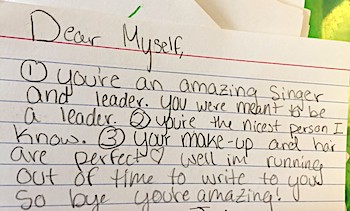Blog
Preparing for the Transition Into Summer
Author: Kathleen Nelson-Simley
Posted: Thursday - April 15, 2021
It struck me that moving from March to April last week means we will soon be winding down the school year and gearing up for summer break.
This is usually a time when we begin to feel the excitement and anticipation of summer. Kids begin to dream about and plan for their favorite summer activities - time in the pool or on the beach with friends, going to the ballpark for games, taking vacations, attending county fairs, visiting amusement parks or going to summer camps. It’s a time of year that offers kids a new routine – time away from school and more free and unstructured time. It’s a transition that is usually welcomed by both kids and adults alike.
For many of us, summer break can’t come soon enough. It’s been a long and exhausting school year for everyone – teachers, parents and kids alike. But, for some, it might feel like summer break started last March and hasn’t yet ended.
Kids who have been able to return to school in-person may be more ready and excited for a summer break than kids who have been learning virtually this school year. For kids who have been learning at home this year, the idea of summer vacation may not bring the same excitement or anticipation it usually does. It may be the continuation of a similar routine they have been in for the past year.
While life begins to move to some normalcy for many, it brings its own challenges – even for kids, and, even during summer break. Re-entry or the transition into normal summer activities may cause anxiety or fear for some kids who have been socially isolated or disconnected this past year. Some families may not have the resources or financial means to provide extracurricular activities for their kids during the summer which could extend the free and unstructured time at home to be even longer.
Preparing students in these final months of school for the transition into summer will be important. There are a lot of great ideas you can find online of projects and activities you can do with students at any age to facilitate this transition. Here are a few of my favorite ideas to help you get started:
Wall of Transition
Designate a wall in your classroom, school or organization and have students fill it with thoughts, words, poetry, song lyrics, photos or images about their celebrations, challenges, strengths and hopes from the past year, as well as their upcoming summer. Add to the wall every week until the end of the school year. You can prime them beforehand by asking questions like:
What did you learn about yourself this past year?
What was your greatest achievement this past year?
What people or experiences did you miss the most?
What is one positive habit you started that you want to continue?
What has made you happy?
What do you hope for this summer?
If you could choose a book, movie, or song that most resembles your life right now, what would it be?
Box of Affirmations
Have students write affirmations to themselves. It can be a letter, short note or just a few words. It needs to be positive, encouraging and affirming. You may need to give them some examples to get them started. Another twist on this idea is to have your students write affirmations to each other. Place the affirmations in a box for each student. On the last day of school, give each student their box of affirmations. If you start this activity now and do it several times a week, they will have 30 to 40 positive thoughts or validations they can read each day during the summer.

Summer Bucket List
When the routines and structures of the school year end some students may find that summer downtime is boring or depressing. Have each student make a bucket list of things they would like to do or accomplish during the summer. You can also help them by brainstorming, as a group, summer activity options or ideas for rainy days. Encourage students to use the summer break to also delve into their interests, passions and strengths.
Emotional First Aid Kit
Creating an emotional first aid kit with students is critical so they end the school year with a plan and some security in case they experience loneliness, sadness or despair over the summer. Here are some points to have them think about in planning their own tool kit:
-
Who are two people you trust that you are able to connect with during the summer break?
-
Are there adults you will see over the summer who support you and share in your well-being?
-
Do you have their contact information?
-
Have you established a safe place where you can go if you are fearful, worried or anxious about anything?
Having a summer that provides opportunities for social activities, connections with friends and family, self-care and good ‘ole summer fun is something we all deserve and need – even our kids. The more we can help them plan and prepare for a positive summer experience, the more they will look forward to it and will more likely achieve it. Better yet, ensuring our students have a positive summer experience also increases the likelihood they will return in the fall with a more refreshed and optimistic outlook for what we all hope is the return of a normal school year.



